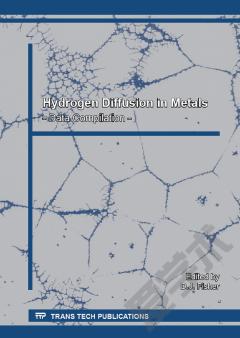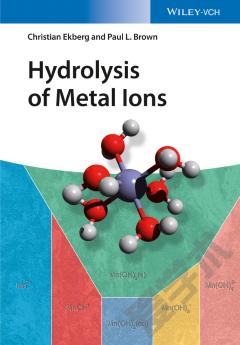The Kinetics of Binary Metal Hydride Decomposition
From the point of view of hydrogen, desorption metal hydrides are extremely complex and interesting. Various metal hydrides differ so much, range in terms of decomposition temperatures and pressures and look like materials from separate classes. Many research articles are devoted to metal hydrides; many of them study the kinetics of dehydriding. However, there is still no complete understanding of the processes that govern kinetics. The reason is for the high number of factors that influence the rate of hydride decomposition and hydrogen desorption. First of all, properties of metal hydrides are diverse. The number of hydride phases, decomposition rates and ranges of absorbed energy are very different. The rates of hydrogen desorption, diffusion and phase transition also can influence the kinetics of dehydriding. The aim of this book is to summarise the authors’ research of dehydriding kinetics with electronic structures of the materials taken into account, and to determine which elementary processes influence the decomposition rates. The book is not a reference guide on the dehydriding rates of constants. Even more so, in order to keep the subject as simple as possible, the authors restrict the discussion only to binary hydrides when talking about basic dehydriding laws. It is possible, however, that ternary and more complex hydrides have their own unique properties.The authors describe experimental results through physically clear and well studied processes, such as desorption, diffusion, reaction of hydride decomposition, etc. as well as by using conservation laws. On the other hand, describing the entire process in the most general way, taking into account all of the possible reactions and excluding some on the grounds of experimental results, also seems unsound. The authors believe that complexity of models must be comparable to that of experimental data; additional factors should be taken into account only in order to improve poor fitting. The following factors seem the most important: Electronic properties of the hydride (type of bonding); phase morphology; incubation and nucleation; physically reasonable elementary processes mentioned above (diffusion, adsorption and desorption, decomposition and formation of the hydride phase, etc.); and the variety of powder particles.Over recent years, much effort has been made to activate the decomposition of magnesium and aluminium hydrides with the hope of finding appropriate materials for keeping hydrogen in solids aboard a vehicle. Most of the research dealt with mechanochemical activation (i.e., ball milling in the presence of catalysts, often in hydrogen). The choice of catalytic materials is not always logical; this was one more reason for systemizing the dehydriding kinetics. Naturally, activated materials must follow the general pattern of decomposing metal hydrides. A separate section is devoted to the activation of magnesium and aluminium hydrides; aside from mechanochemical, we also discuss the thermal and photoactivation of these materials.Target Audience:The book will be interesting to researchers who study metal hydrides; to students who study the condensed matter physics; to engineers of hydrogen energy industry, in particular to specialists in constructing hydrogen accumulators. Ideas proposed in the book can interest chemists who study chemical kinetics of metal compounds. In academy, the book can be used in masters courses on the condensed matter physics.
{{comment.content}}








 京公网安备 11010802027623号
京公网安备 11010802027623号